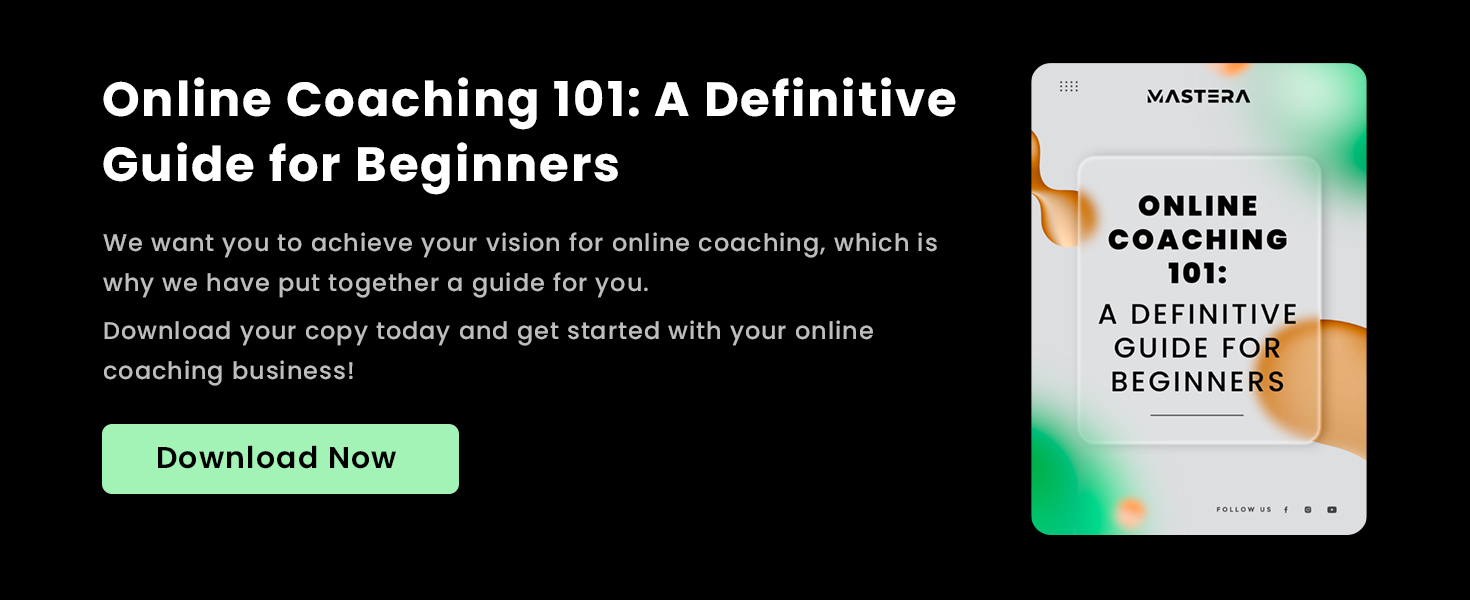In the last year or so, the two words you must have heard the most were likely to be pandemic and online classes. You have seen the world change. Be it for your kid or the business right outside of your neighborhood; everyone has transitioned to a digital medium. Now for your fitness business, we understand that you also need to mold your goals and adjust to the situation by adding VOD and 1:1 virtual sessions to your set of offerings.
In a situation where you need to find ways to keep the fitness community moving, online 1:1 fitness training sessions are a fantastic way to strengthen the client-trainer relationship and also your brand. Online classes are also accessible, rewarding, and create the right environment to help your customers get their dose of accountability. And as the reopening of gyms and fitness centers are underway, you need to embrace this hybrid model.
Even statistics have proven that 60% of Americans don’t get the desired amount of physical activity. And, one of the main reasons behind that is excuses.
Why Leverage the Virtual 1:1 Fitness Sessions?
Every person has a different body, physiology, and morphology. Much like makeup, there is no standard for fitness too. Even though the training is customizable, it requires keen attention to detail. Every trainer needs to analyze the client’s physical capabilities before they suggest a workout regime.
Since there is no specific approach, it’s not possible to manage your clients performance via virtual group sessions. Private online fitness sessions allow the client and the trainer to come together and have better-personalized training programs. This enables individuals to have targeted fitness goals and work towards achieving them.
1:1 sessions are essential for those of your customers who need special attention in terms of fitness. If they aren’t able to cope with the group lessons, switch them to one-on-one sessions. If your client is looking for personal accountability and wants to achieve their goals, suggest the switch.
But, is it as easy as it looks? Launching and growing your private virtual fitness offering requires proper planning. Here are the dos and don’ts you need to keep a check on:
Dos and Don’ts for you keep in mind as you launch and grow this offering
Each section will discuss the things you need to do before and during a private fitness session and the things you shouldn’t.
Let us take a look.
Dos
1. Promote your online 1:1 sessions
Maybe you did conduct personal training sessions before the pandemic happened. But do all of your clients know about it? If not, you need to take the steering wheel and get the word out. Since it is your business, you need to take accountability.
If you already had clients who took in-club personal sessions, then inform them. Inform all the existing gym members that you are starting virtual 1:1 sessions. The first step to a successful online session is to promote it.
Now, there are several ways you can promote it. And we wouldn’t suggest anything to do with flyers. Those days are long gone.
So, what can you do?
There are emails, social media marketing, and even cold calling if that is something you can do.
Bonus- Let us give you an email example and you can take it up from there.
Email template:
Hey there,
<Gym’s Name> is starting private online 1:1 fitness session from <Date>. If you were derailed from your fitness goals, now is the time to take accountability.
Enroll with the <Form> linked, and we will give you a call shortly!
Take care!
2. Introduce an Introductory Offer
All humans are a sucker for discounts. It is natural! You could include “FREE” in an advertisement, and people would come rushing in.
Well, the same can be applied for virtual fitness sessions too.
To begin with, not many people are aware of the online 1:1 fitness sessions. To convince people, you need to make them realize that their investment won’t go to waste.
There are offers that you can include. Be it a free live session or even the hands-on bonuses with actionable guides and fitness modules – the “freebies” depend on you.
Introductory offers are enticing and make the session more accessible to people. If there is someone out there who never had a personal trainer before, a free session can gauge whether it is worth it or not.
So, how can you promote your introductory offers? Well, send out emails, update your Gym’s website and post the updates on social media platforms too.
We have a second bonus for you!
Here’s a sample social media template.
Social media template:
Enroll in a fitness program like never before. Customized workouts. Amazing diet programs and 1:1 weekly Session. Sign up TODAY for a FREE LIVE SESSION. <Include cool picture or video>
3. Leverage a Universal Platform
One of the most common issues you will face with private fitness sessions is the platform to conduct them. It is especially hard for your customers who are not tech-savvy. You, as a fitness trainer, need to refrain from generalizing your customers.
Now, your 25-year old client might know how to operate a zoom cloud meeting, but the 55-year client might not.
It is when you need to be flexible. In scenarios like these, it is okay to have a standard platform for your online sessions based on your ease. But, if one of your clients has a hard time accessing the platform you suggested, you need to press reset and assist them with platform training.
Several robust platforms in the market are intuitive and easy to use. They are built in a way to target a specific niche. It ensures that you can focus on what you know the best, i.e. fitness training.
In conclusion, have a standard platform for hosting all your classes. Platforms like Zoom and Skype work well for these kinds of virtual sessions.
4. Discuss the ideal setup
Now that you have a platform for conducting the virtual fitness sessions with your client, you need to focus on the setup at home. One on one sessions require an adjustable setup at home. It amplifies the result of the training and helps one focus.
As a trainer, it is your responsibility to advise your client on what they need and what they don’t.
The first thing is the environment. When you are conducting the sessions, you need a place that’s quiet and peaceful. It ensures better concentration and better learning for your client. So, start by suggesting to your client about the requirements they need to make around the house.
If they have an empty spare room, ask them to use it for these sessions.
Another crucial part of the setup includes the equipment. Some fitness enthusiasts already have treadmills and a few gym equipment in their houses. In case your client doesn’t have any, you need to plan your workout regime with exercises that don’t require them.
Ask your client to have an elevated surface in the room they are setting everything up in. It allows you to have a better conversation and guide them better when training them with some standing exercises.
Along with the setup, provide your clients with insights concerning the correct workout gear they need. It is necessary for those who are a novice when it comes to training with a fitness trainer.
Now the- Don’ts
1. Don’t Start Without a Client Intake form
Amidst the excitement of starting a new chapter in your career with the online 1:1 fitness session, don’t miss out on one thing – THE CLIENT INTAKE FORM.
The purpose of a personalized session is to know your clients well. If you are unaware of your client’s current health status, tailoring specific fitness programs becomes difficult.
Once you have clients showing interest in your fitness session, you can then send them a customized form.
It doesn’t have to be something pervasive and confusing. You need to ensure that you have all the must-have information concerning your client’s fitness and health after reading through that form.
Several websites offer customizable client intake forms. You can find one that suits your likings and then send the same over to your client.
Types of Questions to include:
- An insight into chronic injuries
- Types of medications they are on
- Any medical history that a fitness trainer should be aware of
- Insights into the current fitness plans and goals
- Available timings for the online 1:1 fitness session
- Any available fitness equipment available at home
Remember that starting your virtual training session without a client form is like going to an exam hall without preparation. If you want your client to have the best training experience with you, you must know every last detail.
2. Don’t have random timings
Every person indeed does things differently. The one mistake you can make with your online 1:1 fitness session is to have no structure to your timing.
You don’t want to give away the notion that you are free all day long. It gives an idea to your client that you might not be the best in what you do. You need to prioritize your clients, but at the same time, you need to prioritize your time too.
Not finalizing a specific time duration for the online Session is one of the biggest mistakes. Like your client’s time, your time is just as important. You need to ensure that you schedule your sessions daily based on both parties’ convenience.
Sorting out 1-2 hours of online Sessions for your client’s fitness is more than enough. Just ensure that you have strict timings.
It helps you to have a strategic approach to the training program, aiding both you and your client.
3. Don’t take the pricing for granted
If you haven’t done personal 1:1 training before, you might not know about the correct pricing.
Many beginner personal trainers lack the knowledge (and sometimes the confidence) to charge the right prices for their training sessions.
You don’t want to be that person.
So, how much should you charge your client?
Well, it depends on your experience, degrees, and expertise in the field. If you are a certified personal trainer, you need to amp up your pricing.
Catering an online 1:1 fitness session takes time and effort. When you are spending 2 hours of your day tailoring a single client fitness program, you want the efforts compensated well.
And, to do that, you need to do market research.
Ask around the town and your trainer friends how much they charge to get an idea. From there, you can look up online fitness platforms and their hourly charges and average yours based on that. Benchmark your prices and if you are good at your job, place a little premium price!
Remember that you can’t settle for a lesser pay just because the sessions are conducted online.
As per reports from IBIS world, the personal training industry in the United States is valued at $9 billion. So, you know for a fact that people are spending money in this industry. You just need to know what works for you and for your client, based on the area you are in.
4. Don’t take on clients you can’t handle
Personal virtual fitness sessions are very demanding. Since they likely have a higher payout, clients demand more attention to their needs.
When you are in a tense situation with hampered income, it is common for you to take every client onboard. Avoid doing that, especially if they have different workout expectations than what your expertise is.
If you are trained in cardio workouts and HIIT training, take on clients looking for that. It helps enhance your customer satisfaction level.
Enrolling every client hampers the session quality because you will likely be in a constant rush to wrap up the sessions. It leads to disappointing results, making the client possibly not return. It isn’t something you want or can afford. This kind of behavior also insinuates unprofessionalism. On one hand, it can dilute your business by making it more difficult for you to show, and for people to know, what your specialty is. Also, if you don’t serve your clients well, it’s a negative image that you are building through for your own brand.
So, enroll clients as much as your bandwidth allows. If you have 4 hours each day to spare for the 1:1 virtual fitness sessions, take on two clients, allotting them 2 hours for each session.
Don’t overdo this, especially if you are starting in the field of personal training sessions. It would help if you worked on building your credibility first. Once you create a brand name of yourself, you can shorten the periods for each session and onboard more clients.
Conclusion
With the coronavirus pandemic hitting the world, every business is tapping into digital platforms. The consistent popularization of online coaching and classes is not just contained to schools but also in the fitness domain.
And, this is where you need to leave your mark. You are all set! Keep these pointers in mind and go ahead acing one-to-one virtual training sessions. Online 1:1 fitness session is gaining gradual popularity, and these are some of the dos and don’ts that you need to keep in mind. Personalize your approach and provide value to your customers. You want your client to gain satisfaction investing in your live Session. All the best.









